Scientists from the Illinois Natural History Survey and the Illinois Department of Natural Resources have updated the state conservation status ranks, or S-ranks, of threatened and endangered plants in Illinois. The update includes some plants not recorded in the state for decades and finds many that, while still threatened, are doing better than previously thought.
Their findings are detailed in the Natural Areas Journal.
The 331 plants on the list are as fascinating as they are rare, said Brian Charles, an INHS scientific specialist in botany who led the multiyear effort. They include carnivorous plants like sundews, pitcher plants and bladderworts; and 18 species of orchids.
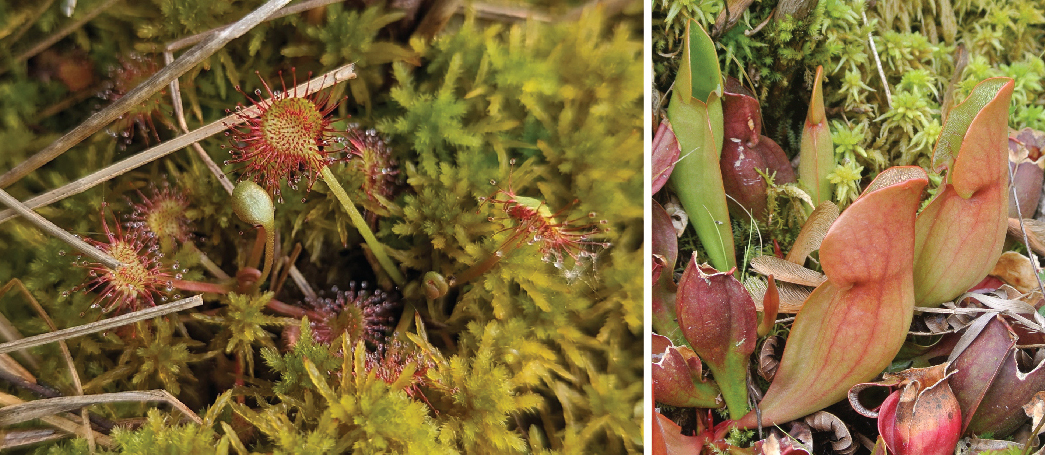
Photos by Brian Charles, left, and Wilson44691
Some commercially important but state-imperiled species such as the highbush blueberry, the large cranberry and the small cranberry have managed to persist in the wild in Illinois despite their small populations. The native version of wild tarragon, a culinary spice used around the world, also persists in northern Illinois.
The list also includes a dwarf prickly pear cactus, which some people are surprised to learn is native to Illinois, Charles said, and the silvery bladderpod, which is more typical in the western U.S. and represents an outlier because it survives here, hundreds of miles from its normal range.
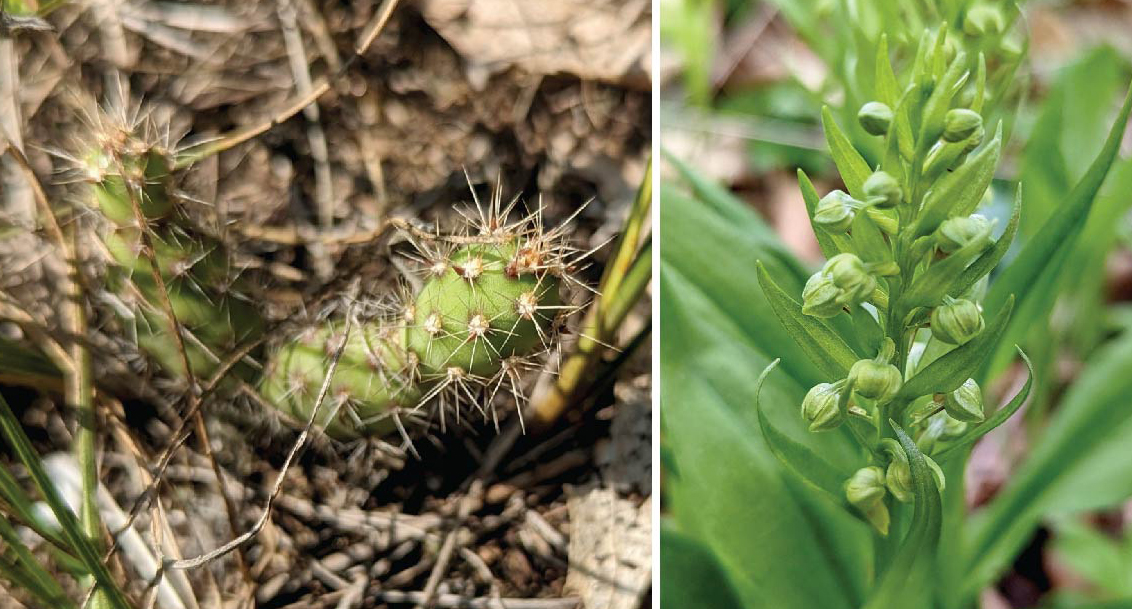
State lists form the foundation of federal threatened and endangered species lists, Charles said. Conservation status S-ranks from states or provinces are used to compile national and global rankings, and states are often the first to recognize that some plant populations are threatened or imperiled or trending downward in an alarming way.
The Illinois S-ranks had not been updated since 1987, and Charles and his colleagues used every available means to put together an accurate account of the status of Illinois plants. They began with the Biotics database from the NatureServe Network, a network of scientists from governmental and nongovernmental organizations dedicated to the preservation of threatened and endangered species across North America. The database houses population data for all threatened and endangered plant species across North America.
"We gathered locality records from online sources such as the Consortium of Midwest Herbaria, iNaturalist and the Global Biodiversity Information Facility," the researchers wrote. The researchers obtained records from regional conservation districts, reviewed published and unpublished reports, interviewed local experts and visited herbaria for specimens that had not yet been digitized. They also went out into the field to look for more than 150 populations of rare species in areas where they had been reported historically.
"Going out to find historical records is kind of like a rare-plant treasure hunt," Charles said.
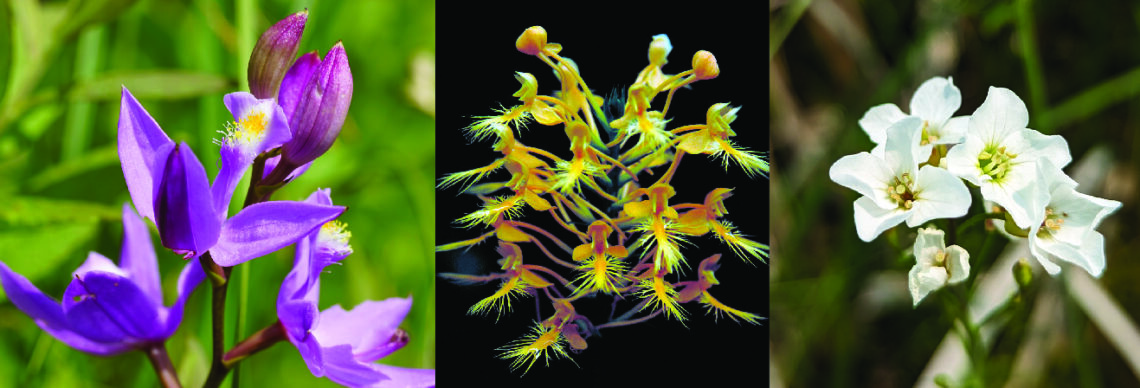
The team then used an established protocol for ranking each species based on its rarity, the threats it faces and trends in its population stability, growth or losses.
The findings provide a new perspective on the status of the rarest plants in Illinois. Of the 331 threatened and endangered plants reassessed, three species - the Laurentian fragile fern, the small whorled pogonia, and a plant known as goosefoot corn salad - were extirpated in Illinois, meaning they were lost to the state. But the trends overall appeared more positive.
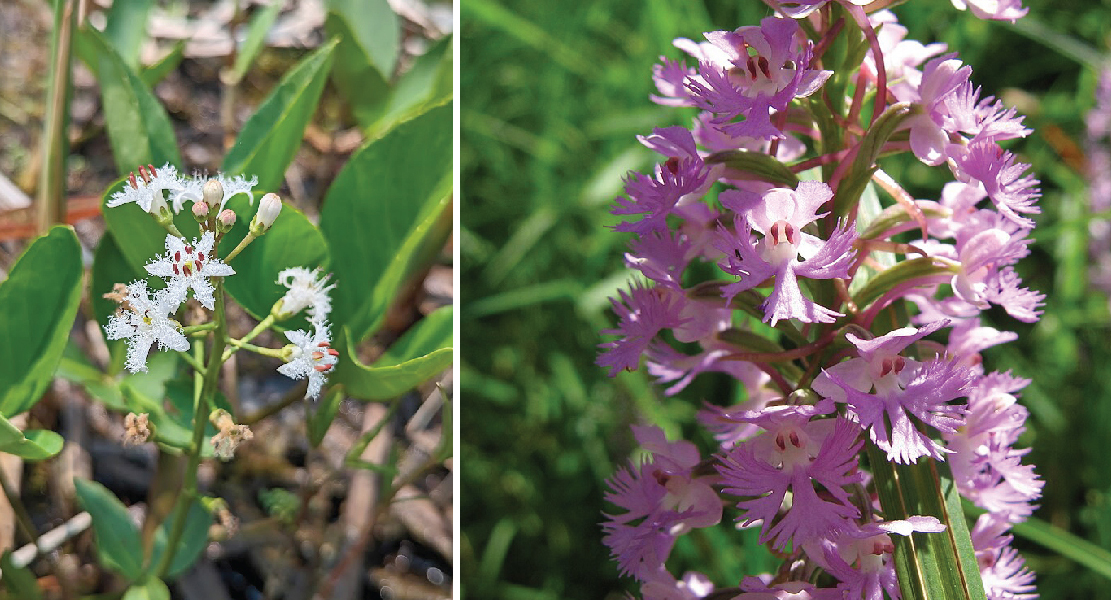
Photos by, from left, Brian Charles, Tucker SP
A total of 257 species were listed both in 1987 and 2023, but their rankings improved, with a decrease in the number of the most imperiled species from 228 to 152 and other declines in the severity of many species' ranks. Only three species were found to be more imperiled than in 1987.
However, the improved status of many of the plants on the list is likely the result of more thorough surveys and methods for documenting threatened and endangered species, Charles said.
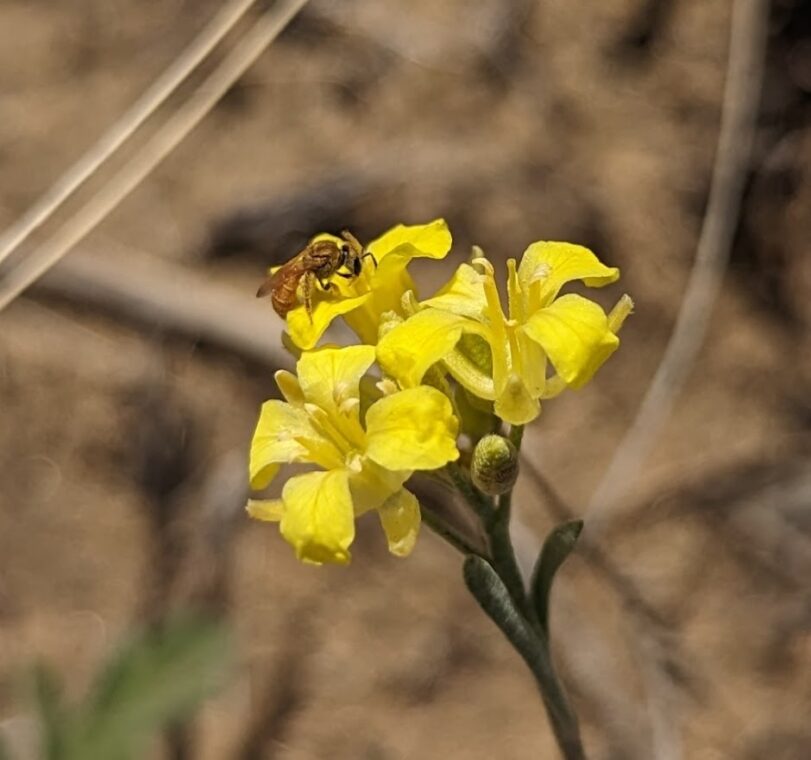
"There are a lot more folks on the ground looking, so of course, we're going to find more populations of these plants," he said. "Many species are still not doing well at the individual population level but are simply less rare overall than we previously thought. And some of the rare plants that are increasing are in areas that are being managed to preserve them, so their comeback is evidence that such approaches are working."
The "treasure hunt" also yielded some welcome surprises, Charles said.
"We found orchids and other plants that hadn't been seen in many years," he said. "We found things that were considered completely gone, that we weren't even looking for."
Eight of the state-listed plants are also listed as threatened or endangered at the federal level. These include the Eastern prairie fringed orchid, leafy prairie clover and Mead's milkweed.
The regions with the highest concentration of threatened and endangered plant species include northeast Illinois in a zone that includes Rockford and the Chicago metropolitan area, central Illinois and floodplains along the Illinois and Mississippi River Valleys.
The work does not end with the updated S-ranks.
"I'm also going through each individual plant occurrence to assess which species and populations have the greatest need for immediate intervention," he said.
Threatened and endangered species conservation status updates also allow states to collaborate on saving plants from extinction. For example, a rare plant with a relatively large population in southern Illinois, softleaf arrow-wood, is more imperiled in nearby states.
"Some folks from neighboring states where they have almost no populations reached out and asked for seeds," Charles said.
Citizen efforts can make a big difference in protecting rare species, Charles said. He urges interested Illinoisans to volunteer with Friends of Illinois Nature Preserves or with Plants of Concern, a volunteer organization that conducts rare-plant monitoring in the Midwest U.S.
"I should note that this project was possible due to the regional, national and international expertise of the botanical team at INHS, including Paul Marcum, David Zaya, Greg Spyreas, Eric Ulaszek and Brenda Molano-Flores," Charles said.
The Illinois Department of Transportation supported this research.






